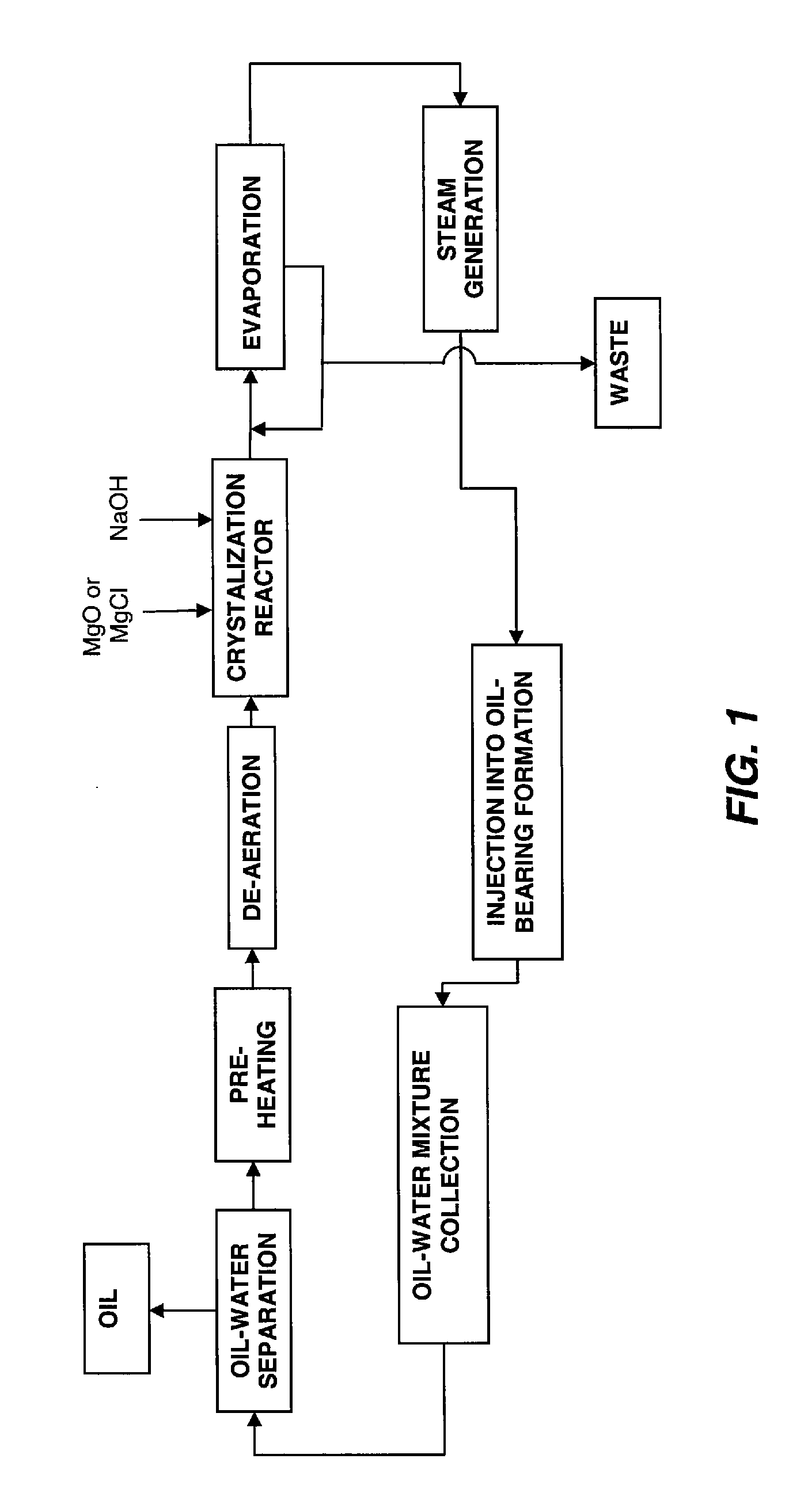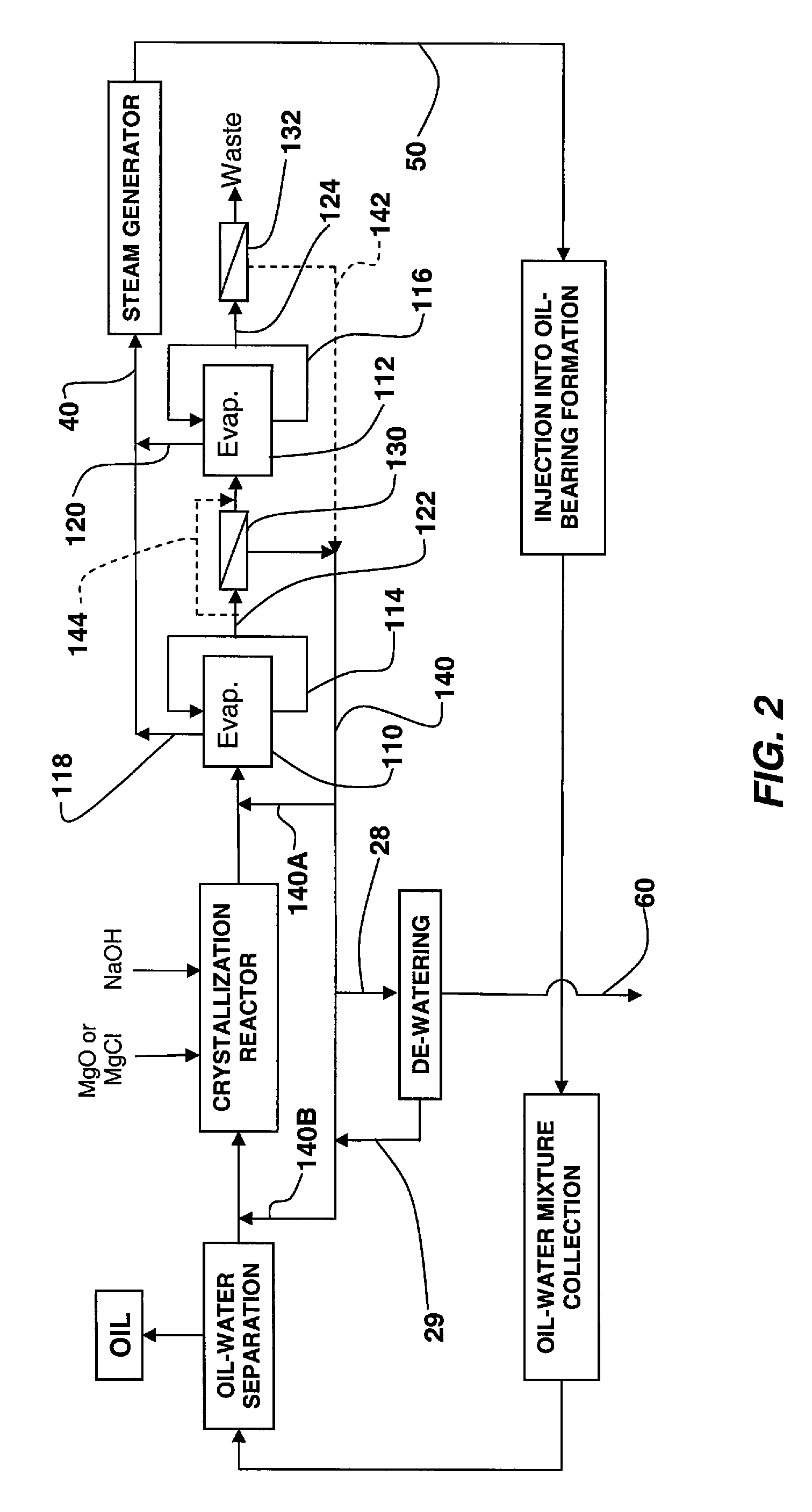Process for Removing Silica in Heavy Oil Recovery
a technology of heavy oil and silica, which is applied in the direction of quarries, waste water treatment from quarries, chemistry apparatus and processes, etc., can solve the problems of difficult water treatment to prepare steam for steam generation, difficult silica-based compounds to foul evaporators, and high viscosity, so as to prevent the silica scaling of the evaporator surface and prevent the effect of evaporator scaling
- Summary
- Abstract
- Description
- Claims
- Application Information
AI Technical Summary
Problems solved by technology
Method used
Image
Examples
example
[0048]A pilot scale test was performed on a produced water sample. The objective of the test was to determine scaling tendency. Dosages of magnesium oxide and sodium hydroxide were mixed with the produced water to simulate the sorption slurry process. The test was performed at a recovery of approximately 97%, meaning that the mass per unit of time of the distillate produced by the single evaporator used was approximately 97% of the mass per unit time of the produced water feed to the evaporator 202. The pilot testing was performed using a single tube falling film evaporator comprising a vapor body, a falling film heat exchanger, brine recirculation pump with variable speed drive, surface condenser for process vapors, steam and process condensate receivers, feed tank, and a feed pump with a variable speed drive.
[0049]The feed used for the pilot test was a produced water sample. An analysis of the produced water sample is provided in Table 1 below.
TABLE 1DescriptionUnitsFeed for 97% R...
PUM
 Login to View More
Login to View More Abstract
Description
Claims
Application Information
 Login to View More
Login to View More - R&D
- Intellectual Property
- Life Sciences
- Materials
- Tech Scout
- Unparalleled Data Quality
- Higher Quality Content
- 60% Fewer Hallucinations
Browse by: Latest US Patents, China's latest patents, Technical Efficacy Thesaurus, Application Domain, Technology Topic, Popular Technical Reports.
© 2025 PatSnap. All rights reserved.Legal|Privacy policy|Modern Slavery Act Transparency Statement|Sitemap|About US| Contact US: help@patsnap.com



